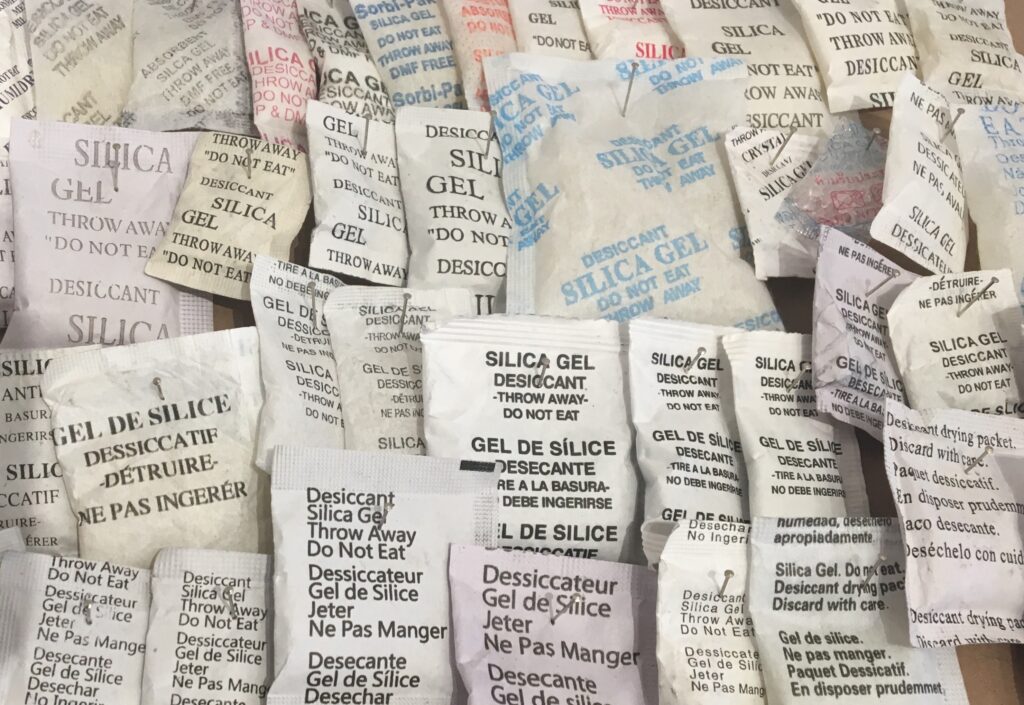
For July, we are excited to feature work by Studio Artist, Alice Combs in the Frank-Ratchye Project Space. Her mixed-media series, Case Studies of Dies Laboris, underlines the habitualized qualities of daily life as a laborer balancing personal and creative endeavors. An art framer by day, Combs spent over a year collecting silica packets, copper staples, scrapped mat board and other discarded materials that have traditionally served function over form.
In a recent interview, we learn about Combs’ meticulous archival method that situates her work within a pseudo-naturalist persona, and attaches new meanings to the seemingly mundane.
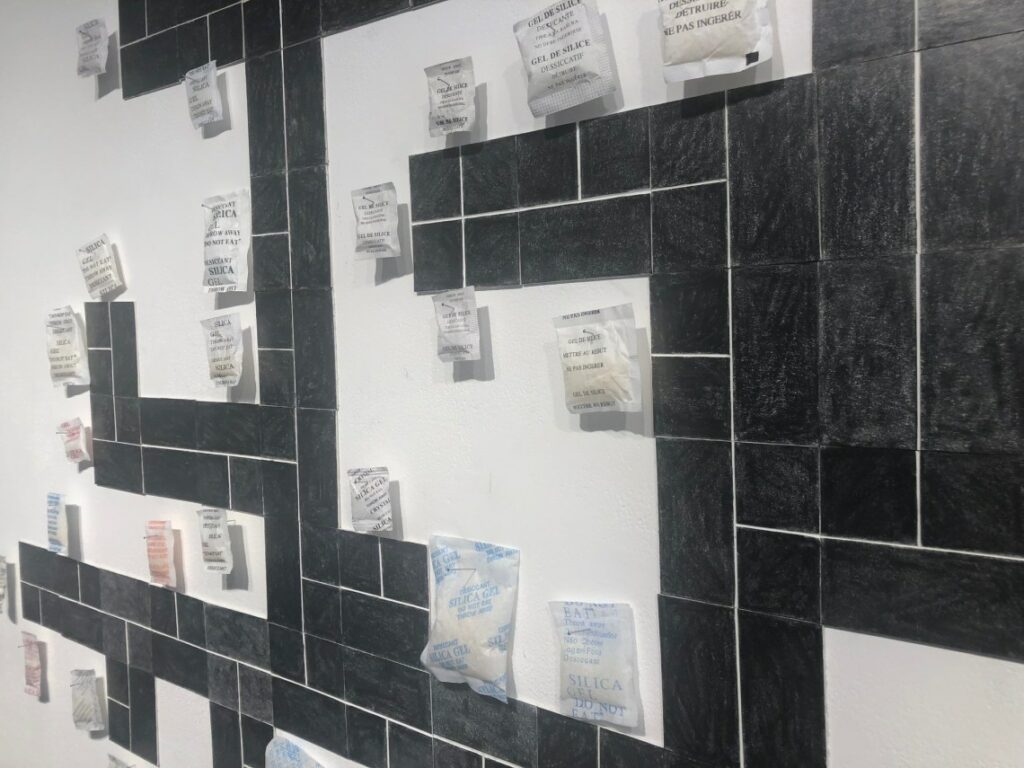
Renae Moua (Exhibitions Fellow): Can you tell me a bit about your art practice and some concepts and/or projects you’re currently working on?
Alice Combs: My current body of work is made out of all materials that I have collected from my day job. It is an effort to reclaim the time that I spend away from the studio. I have a lot of conflict with the system that we are living in where you have to work in order to be an artist, and that’s the reality we live in.
Because I am a framer, my work is made from things that you would see in a retail store, and more specifically items like scrapped mat boards, silica packets, and staples that I find on the ground.
I want to expose our system for how strange it is, and how boring it could be. A lot of the things we live with are invisible and habitualized into our day to daily lives without seeing the system that we’re in. By using discarded things like the silica packets where we just toss away and don’t think about, I’m trying to bring those materials back into focus.
RM: I understand that you received an MFA in Painting from SFAI, but I also noticed you have an interesting background in Biology, with a B.S. from Cornell University. Can you speak to this a little and how that transition happened? Do you feel that these diverse practices compliment each other and inform your current art practice? For example, are there are any elements from science/biology that you draw into your practice?
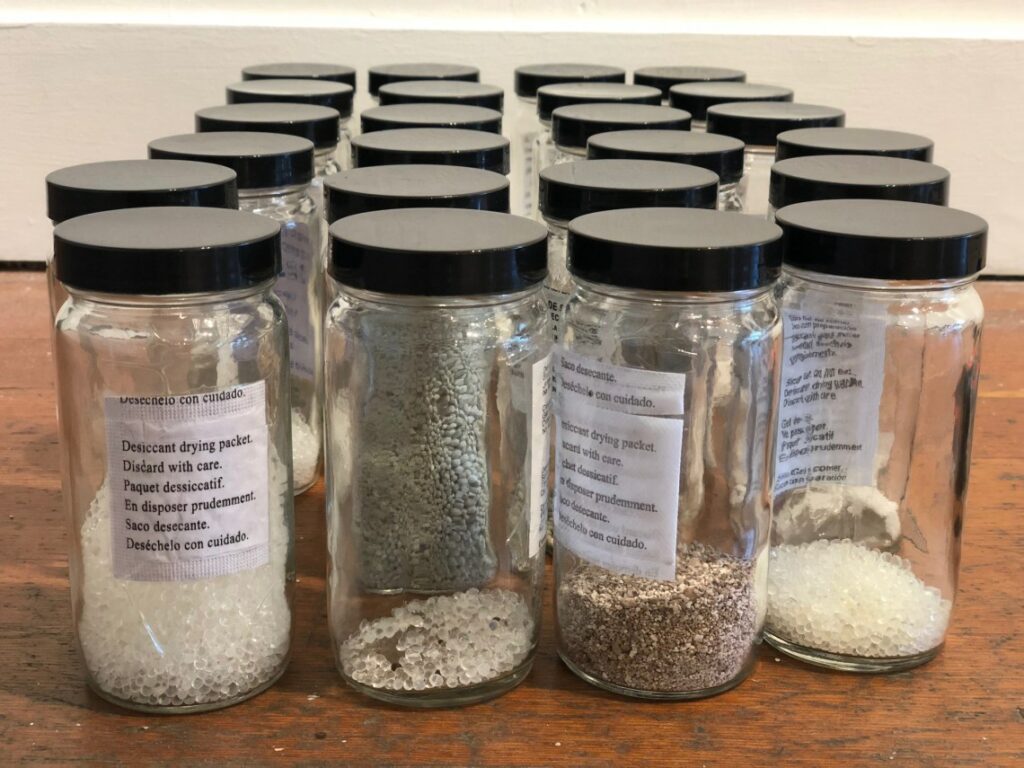
AC: As a teenager and young adult, I was very gung-ho about science in general. I was good at it and thought I would do this in college. I really had no concept that being an artist was a “thing.” I’m sure a lot of people do not know someone who pursues an art career from the get-go, so it was really wasn’t on my radar.
When I got to college, I had a chance to do research in a lab and see what it would be like to be scientist and continue on that path and found that I didn’t like the daily practice of being a scientist. I also took two painting classes in the art school and I realized there are actually students studying art. There are professors who devote their lives and studies to this practice. It was a revelation and I made it my goal at that point to go to graduate school and be exactly like the Teaching Assistant I had in college.
To answer your question, yes, I do have a conflicted relationship with the two. I don’t necessarily think you need to mix the two. I think art and science can operate separately.
As a young person, I thought that by studying science and dissecting things you could understand every living thing about it. But it can be unsatisfying at the same time, because on some level, you don’t get closer to the question of “what are these things in front of me?”
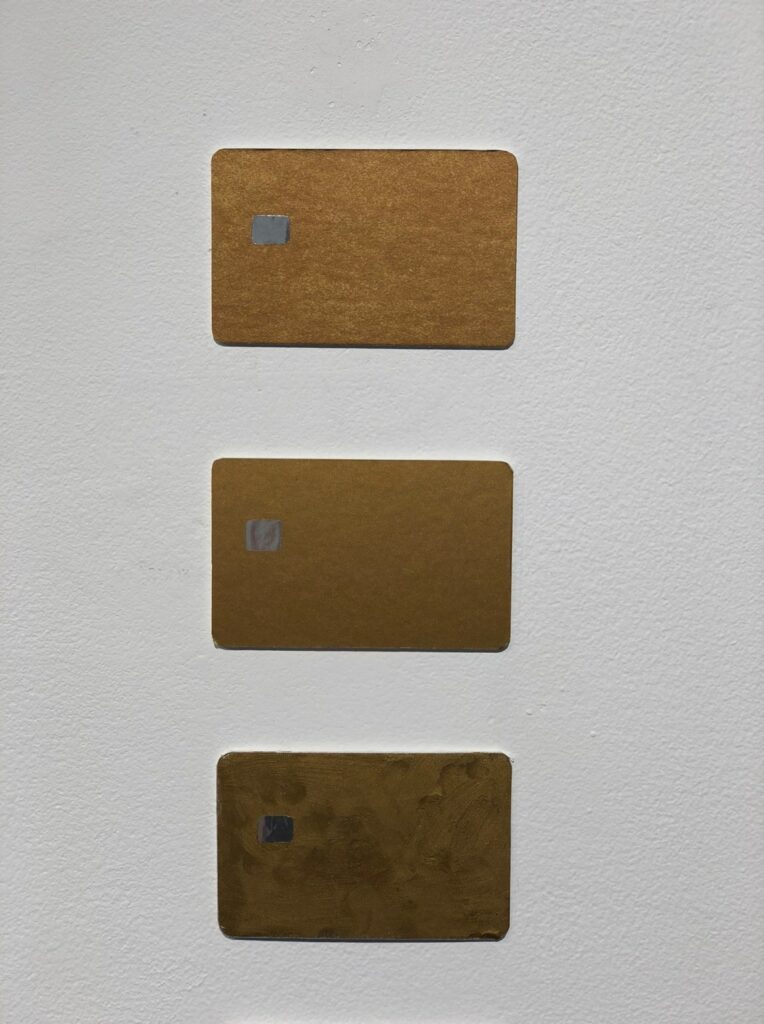
RM: How does this observation relate to your installation approach in the Frank Ratchye Project Space?
AC: For this current project, I’ve taken on this “pseudo-naturalist” persona. I thought it would be interesting to look at these objects that I have been collecting and try to look at them as new species of bugs or plants. For instance, if you went into a new space how would Charles Darwin come into this space and try and categorize and make relationships between objects? I’ve been trying to make an evolutionary tree of the silica packets as a humorous way of looking at science from a scientific point of view. I kind of pick and choose what I want from the science background.
RM: In Case Studies of Dies Laboris, you incorporate an interesting selection of found materials, as previously mentioned silica packets and copper staples. Why did you start collecting these objects and are there any type of meanings that you draw from them?
AC: I was first drawn to the humorous aspect of a silica packet. It’s really funny that it is the only object, from what I’ve seen, that says to throw it away. The disposability of it is so literal. I started seeing them all over at my work, and the different languages that they had, the really bad graphic design—it makes sense that this is the kind of thing you wouldn’t want to make attractive because you’re not supposed to eat it.
Silica is also sand, so it is a very natural, common substance that gets packaged into every toy and manufactured product. It’s an emblem of global trade–these things make it possible for materials to be shipped around the world in a capitalistic way—like they are the things that make it possible for trade to happen.
RM: During our studio visit, you expressed an interest in highlighting silica packets in connection to broader concepts of preservation and absorption of life? Can you speak more into how this idea came about?
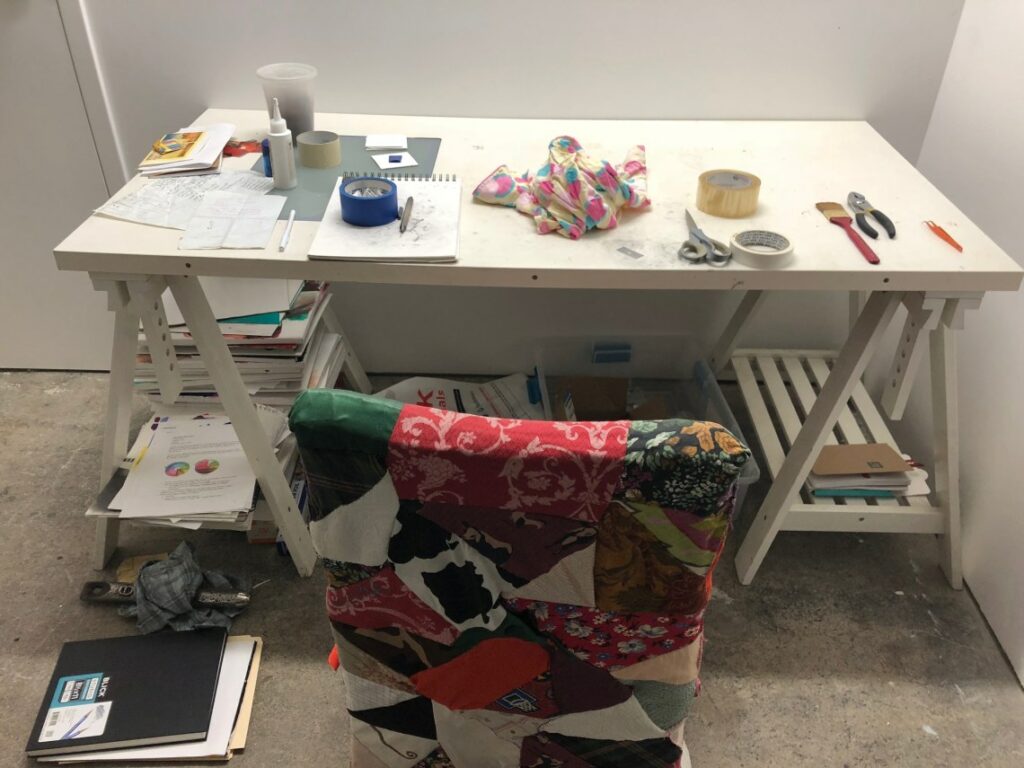
AC: Someone had suggested to me that putting a plant into a vase filled of silica pellets will suck out all the water from the plant, but would continue to keep its shape, and everything clicked for me. I thought that is a perfect metaphor for day jobs. My day job preserves me and gives me space to be an artist, but in a limited way.
RM: I’m really fascinated by your focus on the mundane and seemingly grotesque qualities of “discarded objects” in your work. What are some of your hopes or expectations from working with such aesthetics and how do you think this differs from conventional practices?
AC: This is a small way to point out that there are certain things you miss because we have this self that is so tuned into getting through making it through the day and the things that we have normalized as part of it.
I hope that people who see these will say, “Did you really save all of those?” and question why someone would put in so much effort in collecting these items. I want my audience to have this feeling of overwhelmingness when seeing all these items that would typically be disposed of.
Instead of wondering “why did she do that?” I want to question “why don’t we do that?” and look further at what we consider normal or worthy of collecting, and the meanings we attach to objects.
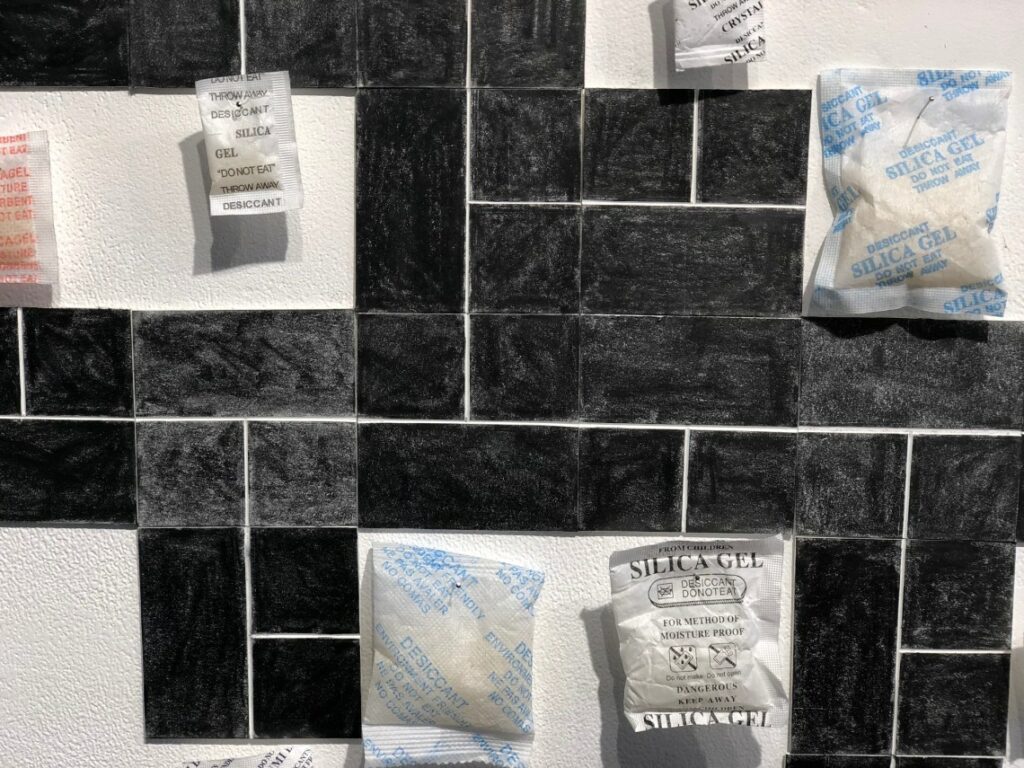
RM: To conclude, what has your experience been like since being a Studio Artist with Root Division? Are there any changes that occurred in your work during your time here?
AC: I would stay at Root Division forever if I could. It’s been very wonderful. I’ve had a number of opportunities since being here.
I started teaching in the Adult and Youth Art Education programs, and that’s been a new experience I’ve had and am very grateful for. In terms of my work, I think the whole body of work I’m doing now has come up within this past year and that is due to me being in this space. I’ve also met quite a few people since being here, and I feel like I’m going to be part of this organization for years to come even after I move.
